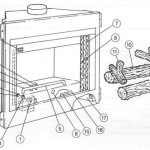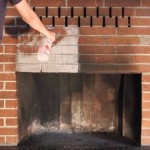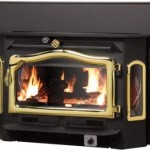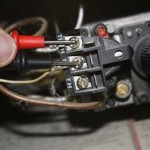Outdoor Fireplace Chimney Height Code: Ensuring Safety and Functionality
Outdoor fireplaces, with their inviting warmth and ambiance, are a popular addition to many backyards. However, the construction and operation of these fireplaces must adhere to specific building codes to ensure safety and functionality. One crucial aspect of outdoor fireplace safety is proper chimney height, which is regulated by building codes to prevent smoke and creosote buildup, ensuring proper ventilation and minimizing the risk of fire hazards.
The required chimney height for an outdoor fireplace is determined by various factors, including the type of fireplace, the height of the surrounding structures, and the local building codes. Understanding the regulations and guidelines associated with chimney height is essential for homeowners and builders to ensure a safe and efficient outdoor fireplace installation. This article delves into the key aspects of outdoor fireplace chimney height code, providing a comprehensive overview of the factors influencing chimney height requirements, the implications of non-compliance, and the importance of seeking professional guidance.
Factors Determining Outdoor Fireplace Chimney Height
The minimum chimney height for an outdoor fireplace is governed by local building codes, which are designed to prevent the accumulation of smoke and creosote within the chimney. These codes typically specify a minimum height requirement based on the type of fireplace, the distance from surrounding structures, and the proximity to property lines.
Here are some key factors that influence the required chimney height:
1. Type of Fireplace:
The type of outdoor fireplace, including its design and fuel source, can significantly affect the required chimney height. For instance, wood-burning fireplaces generally require taller chimneys than gas-burning fireplaces due to the greater volume of smoke and creosote produced.
2. Surrounding Structures:
The height of surrounding structures, such as buildings, fences, or trees, can influence the required chimney height. The chimney should be sufficiently tall to prevent smoke and gases from recirculating back into the fireplace or adjacent structures.
3. Distance from Property Lines:
Building codes often specify minimum distances between chimneys and property lines. These regulations aim to prevent potential nuisances such as smoke drifting onto neighboring properties.
4. Local Building Codes:
Ultimately, the minimum chimney height for an outdoor fireplace is determined by the specific building codes of the local jurisdiction. These codes may vary from city to city and state to state, so it is crucial to consult with your local building department to ensure compliance.
Potential Consequences of Non-Compliance
Failure to comply with outdoor fireplace chimney height requirements can have several serious consequences, including:
1. Smoke and Creosote Buildup:
A chimney that is not tall enough can result in smoke and creosote buildup within the chimney, leading to decreased efficiency, potential fire hazards, and damage to the fireplace and chimney.
2. Fire Hazards:
Creosote is highly flammable and can ignite, posing a significant fire hazard. Improper chimney height can increase the risk of chimney fires, which can spread to the surrounding structures.
3. Smoke Nuisance:
An undersized chimney can cause smoke to backdraft and drift into the surrounding area, creating a nuisance for neighbors and potentially impacting air quality.
4. Code Violations:
Failure to meet local building code requirements for chimney height can result in fines, legal penalties, and even the requirement to demolish the non-compliant fireplace.
Importance of Professional Guidance
Due to the complexity of chimney height regulations and the potential consequences of non-compliance, it is highly recommended to seek guidance from qualified professionals. A certified chimney sweep or a licensed contractor specializing in outdoor fireplace installation can assess your specific situation, determine the appropriate chimney height based on local codes, and ensure that the installation meets safety standards. They can also provide expert advice on chimney materials, design, and maintenance to ensure the longevity and efficiency of your outdoor fireplace.
By adhering to local building codes and seeking professional guidance, homeowners can ensure that their outdoor fireplaces are safe, functional, and compliant, allowing them to enjoy the benefits of this popular feature without compromising safety.

2024 International Residential Code Irc Icc Digital Codes

Construction Codes Of Ontario

How To Calculate Fireplace Chimney Height Above Roof Building Code Tips

Chapter 10 Chimneys And Fireplaces Georgia State Minimum Standard One Two Family Dwelling Code Upcodes

The 3 2 10 Chimney Rule What It Is How Do You Measure

Chapter 10 Chimneys And Fireplaces Residential Code 2024 Upcodes

Chimney Height On Roof General Inspection Discussion Internachi Forum

Chapter 10 Chimneys And Fireplaces 2024 Fbc Residential 6th Edition Upcodes

Chapter 10 Chimneys And Fireplaces Alabama Residential Code 2024 Upcodes

2024 International Residential Code Irc Icc Digital Codes
Related Posts








